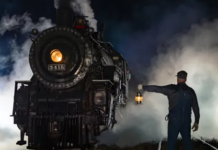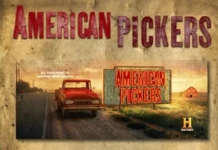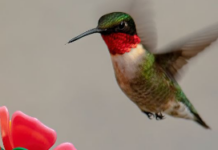Today’s News from the University of Kansas
From the Office of Public Affairs | http://www.news.ku.edu
Headlines
Study: New voting laws continue disenfranchisement, put elections
administrators in difficult positions
LAWRENCE — In the years since a 2013 U.S. Supreme Court ruling struck down key provisions of the Voting Rights Act of 1965, some states have passed laws that have made it more difficult for minority and low-income Americans to vote. Those laws can also challenge election administrators trying to enact policy while maintaining equity and access as their jobs require, according to a University of Kansas professor in a new study published in the journal Public Integrity.
Collaborative experiments in embodiment lead to open minds
LAWRENCE – Two University of Kansas professors contend in a new paper that you can bring together two seemingly unrelated classes to the benefit of each if they have “(e)nough connective tissue … for grafts to take hold and grow, and enough difference to generate new possibilities.” Their article, published in the journal Critical Studies in Improvisation, details successful collaborations between their American studies and dance students in 2008 and 2012.
Full stories below.
————————————————————————
Contact: Mike Krings, KU News Service, 785-864-8860, [email protected], @MikeKrings
Study: New voting laws continue disenfranchisement, put elections
administrators in difficult positions
LAWRENCE — In the years since a 2013 U.S. Supreme Court ruling struck down key provisions of the Voting Rights Act of 1965, some states have passed laws that have made it more difficult for minority and low-income Americans to vote. Those laws can also challenge election administrators trying to enact policy while maintaining equity and access as their jobs require, according to a University of Kansas scholar.
Shannon Portillo, associate professor of public affairs & administration, has co-written a new study about the aftermath of Shelby County v. Holder that outlines the vital role state, county and local elections administrators play in carrying out those policies and how they are expected to be neutral actors in a political position.
“Many of these laws put elections administrators in difficult positions and often create barriers for citizens trying to exercise their right to vote. These policies are also complicated to enact,” Portillo said. “Administrative discretion then ends up playing a big role in who can and cannot access the ballot box.”
Portillo and co-authors Domonic Bearfield and Norma Riccucci of Rutgers University published their study in the journal Public Integrity.
They review many policies enacted since Shelby v. Holder, including voter ID laws, restriction of early voting, changing or closing polling locations, and other actions that have presented barriers to voting for disenfranchised populations, including low-income voters and citizens with disabilities. The authors point to research that shows not only how the policies have had an outsized effect on historically disenfranchised groups, but the vital role administrators play in their enactment.
For example, many states have passed voter ID laws. Officials at offices such as the Department of Motor Vehicles that issue drivers’ licenses, the most common form of ID, have great power to determine who receives the identifications and in turn, has the ability to vote.
Similarly, both elected and appointed officials at all levels of government have the responsibility of carrying out all aspects of voting laws and policy. While they often take positions with the intent of providing fair and equitable service to all citizens, they are frequently put in the uncomfortable position of being required to enforce laws and policy that prevent equitable voter access, the authors wrote.
“We are not suggesting that a public administrator would use their discretionary authority to break the law by allowing someone to vote without an ID if the state law requires proper identification,” the authors wrote. “Rather, we are suggesting that practices such as voter ID laws create conflict for the administrator who understands the importance of equity and how the law might be prohibitive toward voters of color.”
While Portillo and her co-authors highlight laws and policies that have affected minority voters in recent years, such as moving or closing of polling places and restriction of early voting, she added that since the article’s writing, the COVID-19 pandemic has accelerated some of those policies.
“What we’ve seen across the country is polling places are more likely to be closed in places where a large number of people of color live and in areas with a lot of low-income voters,” Portillo said. “I think this is an ongoing problem that the pandemic has exacerbated.”
Such policies put voters and elections administrators in difficult positions, but the solution lies not only with policymakers, the authors wrote. They said the field of public administration needs to pay closer attention to the vital role of election administrators, acknowledge how they are expected to be neutral in an inherently political role and further research the intersection of politics and administration while preparing future public administrators to understand the dichotomy.
“In large part, this is due to the history of our field, which came about during the Progressive Era and aimed to take partisanship out of the administrative process,” Portillo said. “In the mid-20th century, public administration began to be viewed as a normative good that is political, but not partisan. Public administrators could advocate for policy without being partisan. But in the current environment, that can easily be viewed as a public administrator acting in a partisan way.”
It then falls not only to policymakers to pass laws that increase access to polls but also to educators to prepare students who will hold those roles in the future to think about how they will handle such conflicts, Portillo said, and for researchers to further study the intersection of public servants with partisan electoral processes that could restrict access to the ballot box.
——————————————————————–
The official university Twitter account has changed to @UnivOfKansas.
Refollow @KUNews for KU News Service stories, discoveries and experts.
————————————————————————
Contact: Rick Hellman, KU News Service, 785-864-8852, [email protected], @RickHellman
Collaborative experiments in embodiment lead to open minds
LAWRENCE – Two University of Kansas professors contend in a new paper that you can bring together two seemingly unrelated classes to the benefit of each if they have “(e)nough connective tissue … for grafts to take hold and grow, and enough difference to generate new possibilities.”
Michelle Heffner Hayes, professor of theatre & dance, and Sherrie Tucker, professor of American studies, published an article in the journal Critical Studies in Improvisation titled “Grafting and other Ramifications: Improvisation Across American Studies and Dance,” which details their collaborations in 2008 and 2012.
In those years, they team-taught a group of undergraduate dancers and graduate students of American studies to test their ideas about how each class could benefit from studying the act of improvisation together.
It was a collaboration among other KU institutions — the Spencer Museum of Art and the Natural History Museum/Biodiversity Research Center — that got the two professors thinking about the concept of grafting for their own collaboration.
They wrote they were inspired by participating in the museums’ 2009 exhibition “Trees and Other Ramifications: Branches in Nature and Culture” and decided to “apply the metaphor of ‘grafting’ for approaches to improvisation that produce a hybridized pedagogy.”
Tucker, they wrote, had struggled to get “theory-focused graduate students in a reading seminar to consider research, thinking and writing as embodied practices,” while Hayes was challenged “to persuade undergrads to recognize their own intelligence and engage deeply in the intellectual exercises embedded in the studio practice.”
“We decided that the same readings and exercises would benefit both classes, despite the differences in disciplinary backgrounds and educational levels,” the professors wrote.
Despite some challenges, in the end, Tucker and Hayes wrote, the collaborations proved successful: “In addition to challenging and expanding the intellectual understanding of complex theoretical structures, accumulating a new vocabulary of embodied responses with their distinct measures of virtuosity, and integrating different compositional improvisation strategies within performance, the group generated knowledge and notions of community across intersectional identities.”
It takes some doing, the professors said, to get two such disparate groups of students to overlap productively. To build trust, the two groups had to share some truths with each other, one of which turned out to be their shared fear of judgment by outsiders. Dancers have had to get over their fears of insufficient skills and less-than-idealized bodies, while the American studies graduate students shared their struggle overcoming their fears of appearing physically awkward and mentally less than brilliant.
“It’s a re-sensitizing, almost, where people have to be vulnerable and be present in the moment,” Hayes said. “There’s this bond of trust that builds between people, because you’re all surrendering to the vulnerability of that process. And the more you stretch that space, the more things become possible.”
Then, Tucker said, “When you set up the parameters, you have to imagine what might happen in those parameters, but you have to leave enough room for surprise. So we made very careful decisions about when we would bring our classes together and when we would be separate, what kinds of things we would try together. But we also left enough room for various surprising things to happen, and they did.”
The paper recounts a performance the classes did together outside the Spencer Museum, in the forested Marvin Grove on the KU Lawrence campus.
And while Hayes and Tucker have not team-taught since 2012, they have collaborated on a project called AUMI-KU InterArts, where they employ the Adaptive Use Musical Instrument to facilitate ongoing community jam sessions for people of different physical abilities. They have encouraged their students to participate to get a flavor of the improvisational methods they tried to inculcate in class.
“I think bringing them into the dance studio was absolutely transformative,” Tucker said of her students. “The things that they shared with me were about how it made them think about their work as collaborative, as embodied and as full of possibility. I would have them write about their bodies in the archive, or their bodies at the computer, and I think that could be abstract if they weren’t going into the dance studio. But with that assignment, because they were dancing with dance students, they really were thinking more about their work as embodied. I think it makes a big difference.”
————————————————————————
KU News Service
1450 Jayhawk Blvd.
Lawrence KS 66045
Phone: 785-864-3256
Fax: 785-864-3339
Erinn Barcomb-Peterson, director of news and media relations, [email protected]
Today’s News is a free service from the Office of Public Affairs




